Bighorn Identifying Characteristics
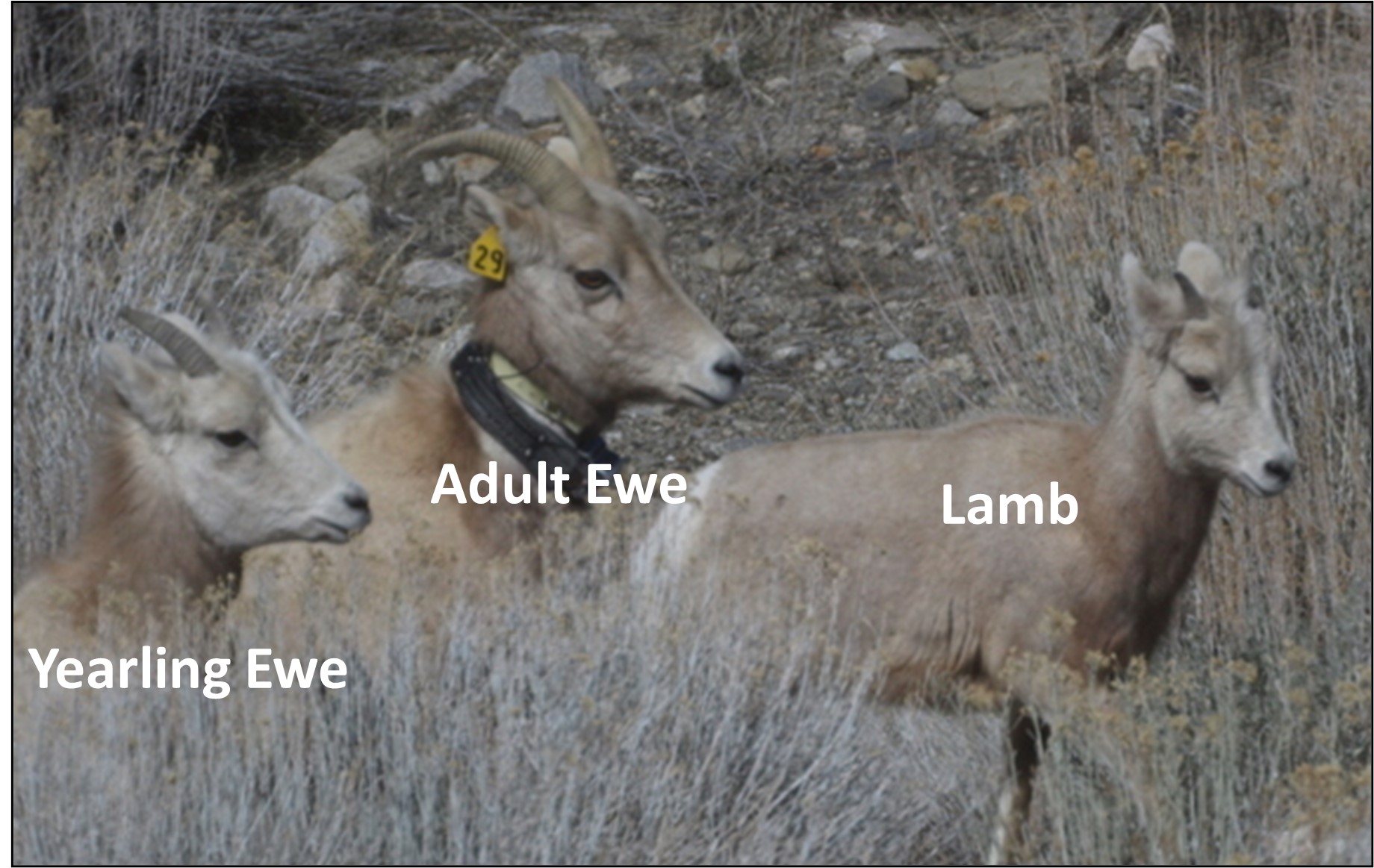
Male and female bighorn sheep have horns, even young lambs, but adult rams have significantly larger horns than ewes (see photos of females and lamb above, males below).
Note the yellow right eartag on the ewe, above, and the red right eartag on the ram, below. Eartag color and configuration are how we identify individual sheep (eartag number is even better if you get close enough to see it). Collar color and size are other helpful identifiers.
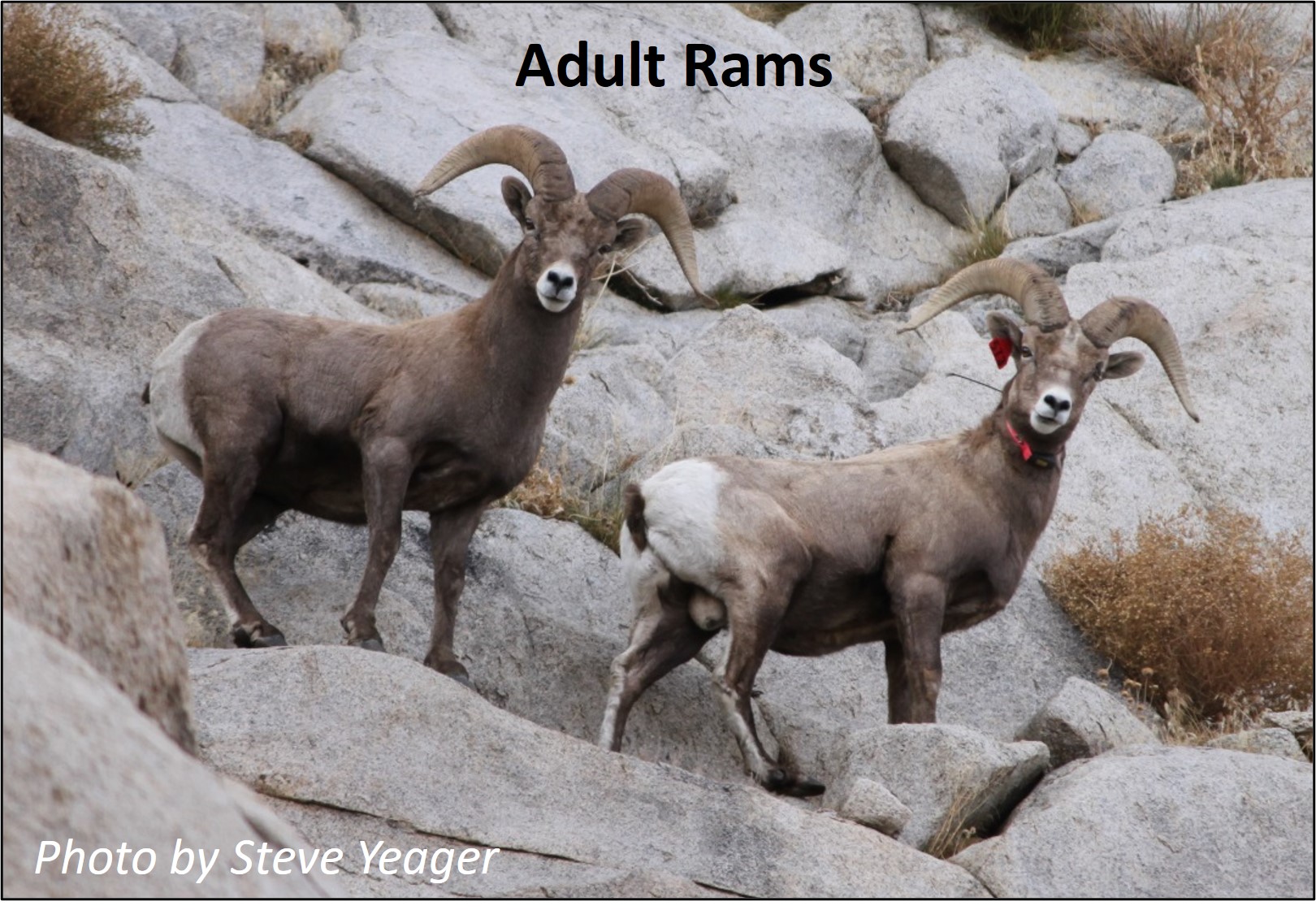
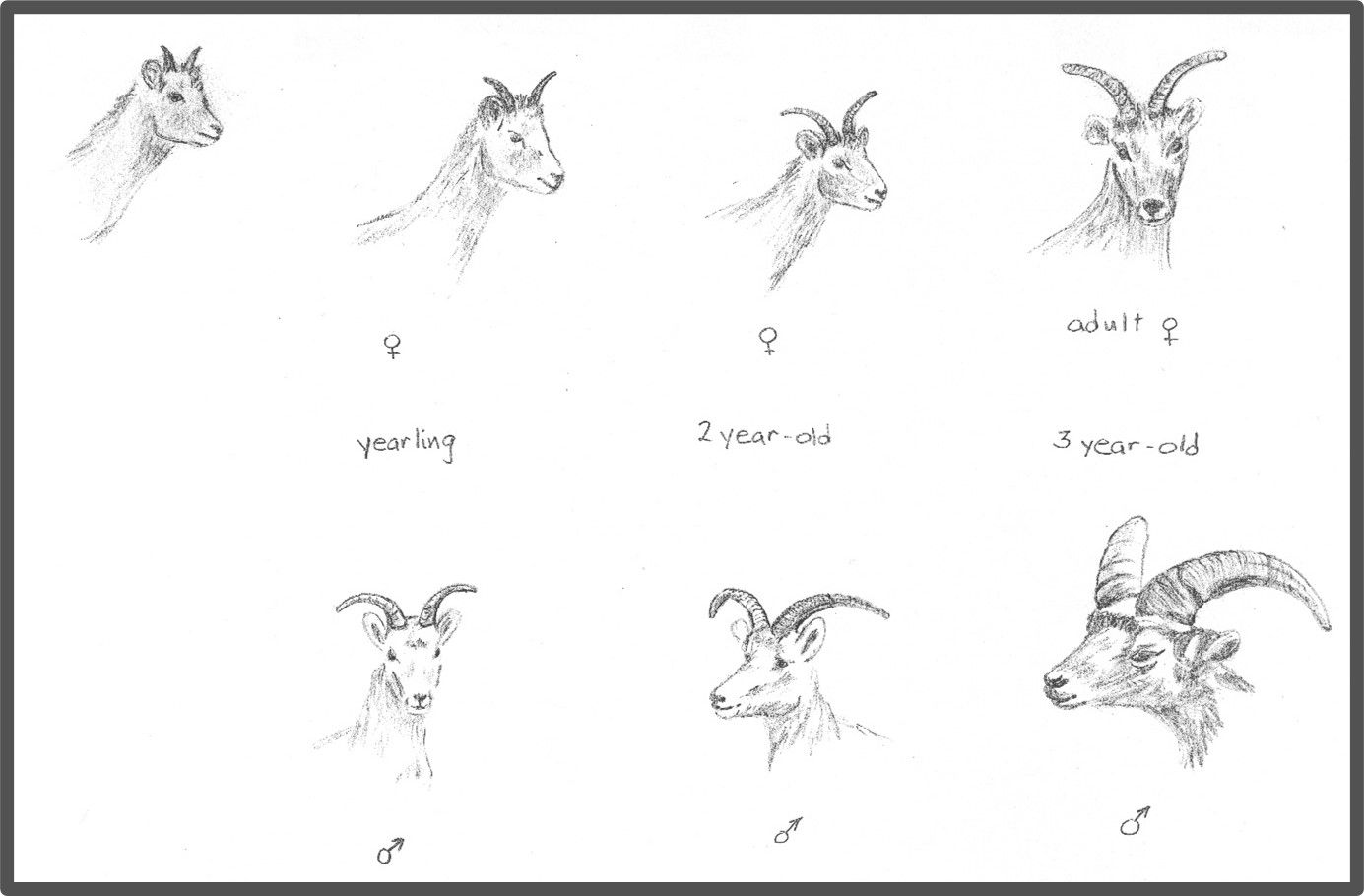
Adult rams and ewes look very different from each other and are easy to tell apart. Not only do adult rams have much bigger and more flared horns, they are also much larger in body size.
Young rams can be difficult to distinguish from ewes (see drawings above and photo below). Rams have horns that are more flared than ewes, and they are thicker at the horn base.
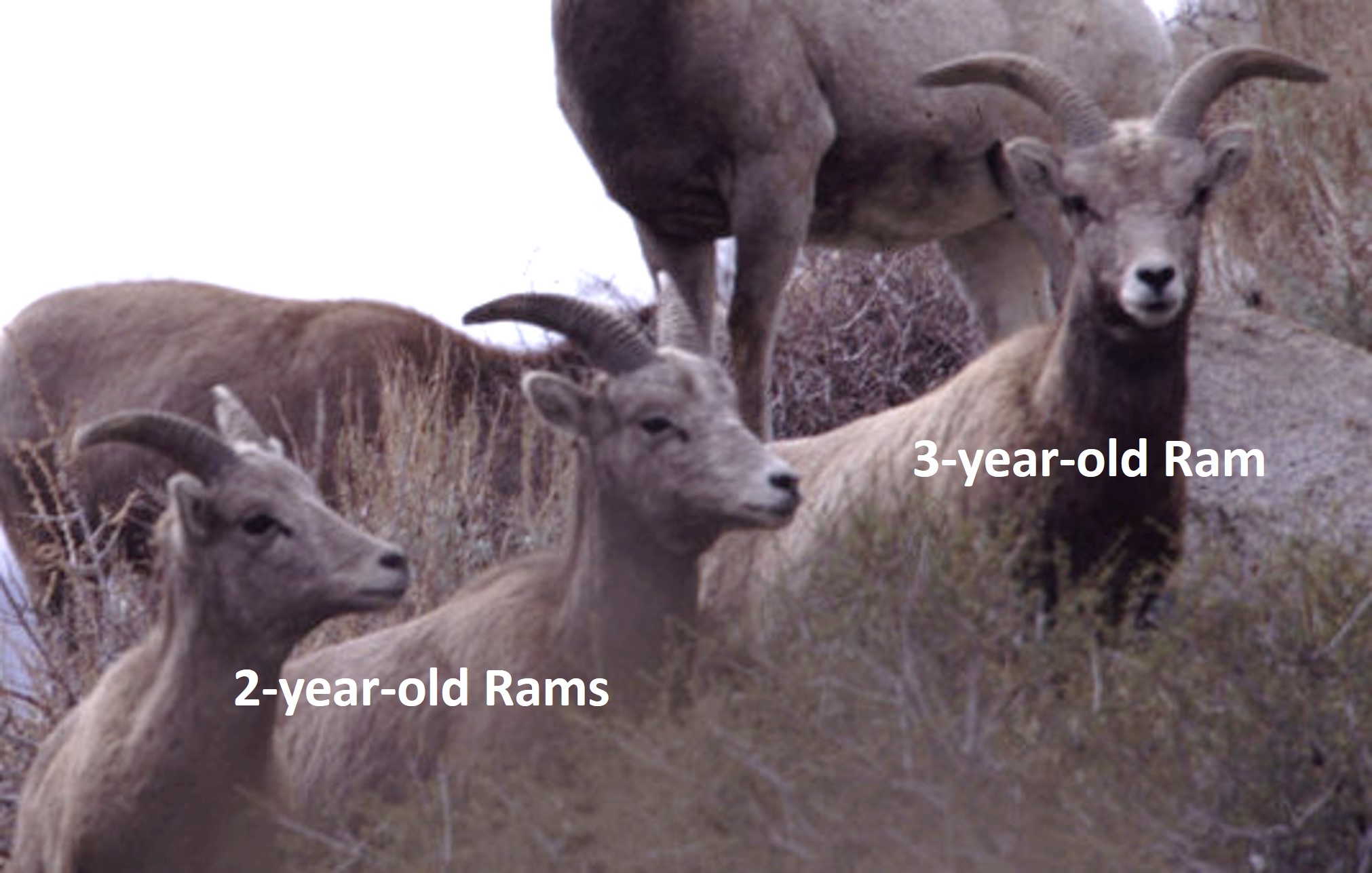
Below is a photo sent to us by a backcountry skier. Some observations, such as this one, can yield priceless data and let us know a collared animal is still alive.
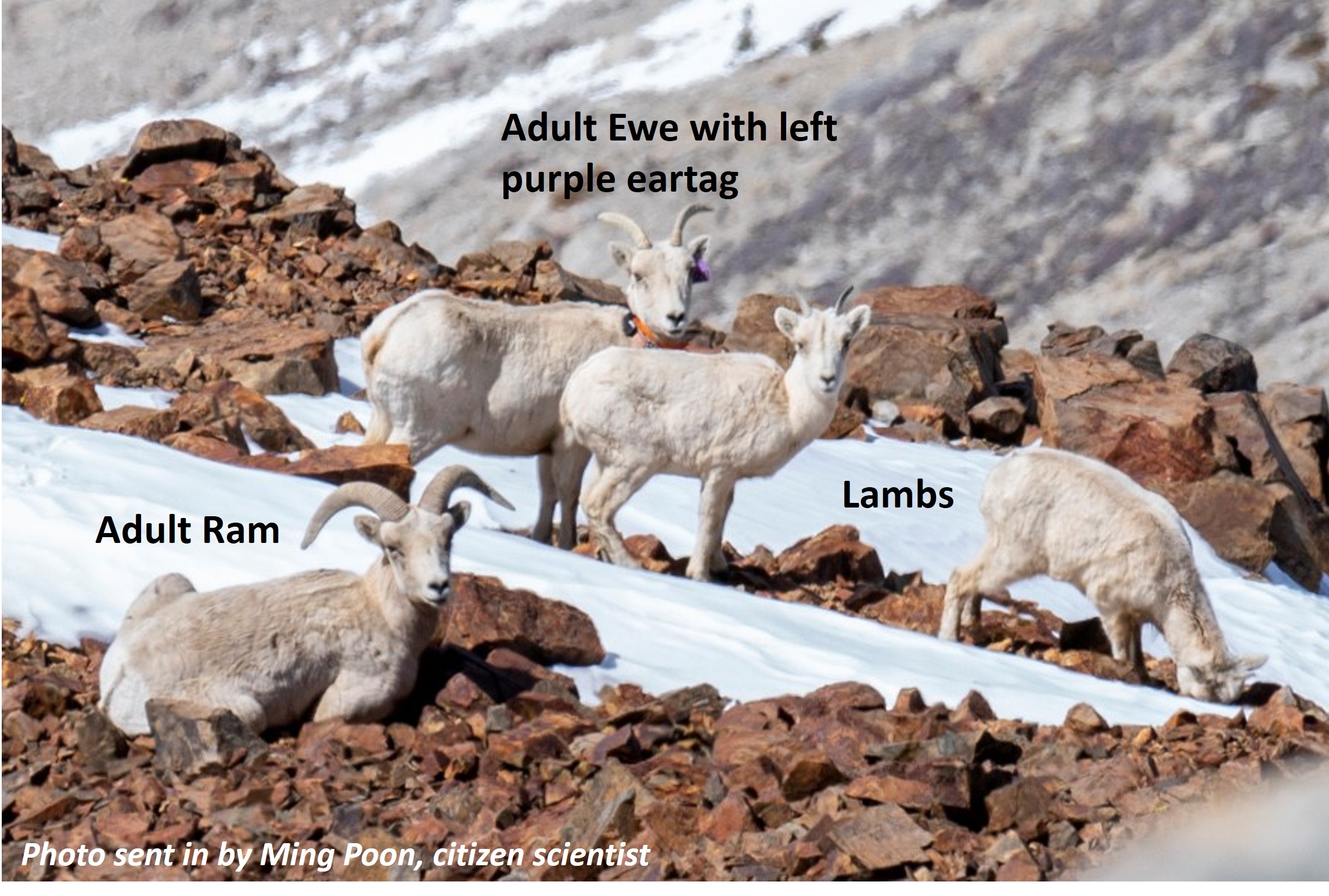
How You Can Help
Tracking bighorn sheep throughout the entire Sierra Nevada is a big job for a small crew. Each year we attempt to survey every herd of Sierra bighorn, which includes counting and identifying all individuals. If you are out hiking or skiing and see bighorn, we would love to hear about it. We record all observations sent to us. A few of these have even shown us range expansions we were unaware of, such as the Convict Creek herd years ago. It is impossible for us to have eyes everywhere, but with your help we can collect data over a much broader area. If you would like to help, here are some things you can do:
- Bring binoculars and/or spotting scope with you when you hike—usually bighorn are a long distance away in steep terrain and not easily seen with the naked eye.
- When you see SNBS record date, specific location (latitude/longitude or UTMs if possible), # of animals, and all identifying characteristics (especially: age/sex/eartag colors/collar details--see below)
- Email your observations (photos too, if you have them!) to asksnbs@wildlife.ca.gov
If all you can tell us is where you saw bighorn sheep, but you weren’t able to get any details, this is fine! Sometimes knowing there are bighorn in an area is a priceless discovery on its own.
The Sierra Nevada Bighorn Sheep Recovery Program thanks you in advance for your efforts!
Field Trips
CDFW and the Sierra Nevada Bighorn Sheep Foundation offer fieldtrips to view bighorn sheep during the winter and early spring when Sierra bighorn are most accessible. For more information and to sign up, email asksnbs@wildlife.ca.gov.
Learn more